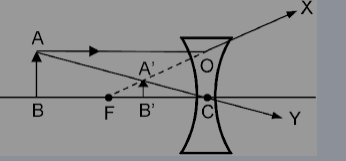EXAMPLE from MODERN PUBLICATION Chapter 25 REFRACTION OF LIGHT for Class 12
| Class 12 | PHYSICS |
| Chapter | REFRACTION OF LIGHT |
| MODERN PUBLICATION | EXAMPLE |
| Medium | English |
| Academic Year | 2023-2024 |
Question 19
A transparent cube of side 210 mm contains a small air bubble. Its apparent distance, when viewed through one face of the cube is 100 mm and when viewed through the opposite face is 40 mm. What is the actual distance of the bubble from the second face and what is the refractive index of the material of the cube?View SolutionQuestion 20
One face of a glass cube of side 0.06 m is silvered.An object is placed at a distance of 0.07 m from the face opposite to the silvered face.Looking from the object side,the image of the object appears to be 0.11 m behind the silvered face.Calclate the refrative index of the material of glass.View SolutionQuestion 27
A beam of light of wavelength 400 nm is incident normally on a right angled prism as shown in fir.2.45.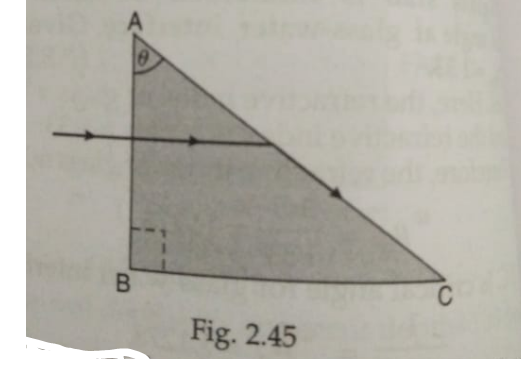 .
.
It is observed that the light just grazes long the surface AC after falling on it.Give that there fractive index of the material of the prism varies with the wavelength as per the relation.
μ=1.2+bγ2
Calculate the value of b and the refractive index of the prism material for a wavelength γ=500nm.Given θ=sin−10.625.View SolutionQuestion 29
A spherical surface radius of curvatue R seprates air (refractive index 1.0) from glass 9refractive index 1.5).The centre of curvature is in the glass.A point object P is placed in air is found to have a real image Q in the glass.The line PQ cuts the surface at a point O and PO = OQ[Fig.2.47].Find the distance of object from the shperical surface. .View Solution
.View SolutionQuestion 31
Fig.2.49 shows a solid glass sphere of radius 5 cm that has a small air bubble O trapped at a distance 2 cm from the centre C.Th refractive index of the material of glass is 1.5.Find the apparent position of the bubble where it will appear ,when seen throught the surface from an ougtside point E.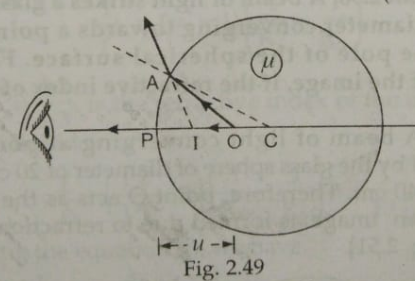 .View Solution
.View SolutionQuestion 42
A double convex lens has 10 cm and 15 cm as its two radii of curvature.The image of an object,placed 30 cm from the lens,is formed at 20 cm from the lens on the other side.Find the refractive index of the material of the lens.Whgat will be the focal length ?What will be the focal length of the lens,if it is immersed in water of refractive index 1.33?View SolutionQuestion 43
An equiconvex lens with radii of curvature of magnitude R each,is put over a liquid layer poured on top of a plane mirror.A small needle ,with its tip on the principal axis of the lens,is moved along the axis until its inverted real image coincides with the needle itself.The distance of the needle from the lens is measured to be a as shown in Fig.2.53.
On removing the liquid layer and repeating the ezperiment,the distance is found to be b as shown in Fig.254 .Gien that tow values of distances meeawured reepresent the focal length values in the two cases, obtain a formula for the refractive index of the liquid.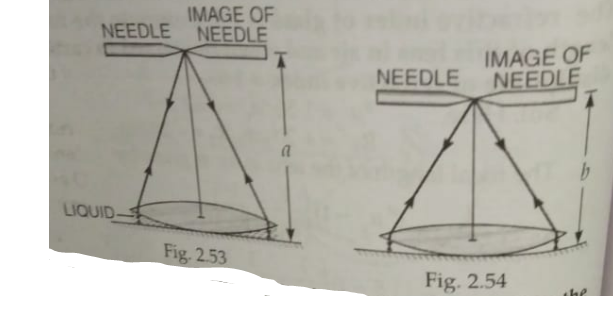 .View Solution
.View SolutionQuestion 52
A convex lens of focal lenght 20 cm is placed coaxially with a concave mirror of focal length 10 cm at a distance of 50 cm apart from each other.A beam of ligh coming parallel to the principal axis is incident on the convex lens.Find the position diagram showing the formation of the imge.View SolutionQuestion 53
A convex lens of focal lenght 20 cm is placed coaxially wih a convex mirror of radius of curvature 20 cm.the two are kept at 15 cm apart.A point object lies 60 cm in front of the convex lens.Draw a ray diagram to show the formation of the image by the combination.Determine the nature and position of the image formed.View SolutionQuestion 60
Show that a convex lens produces an N times magnified image,when the object distances from the lens have magnitude (f±f/N).Here,f is the magnitude of the focal length of the lens.Hene,find the two values of object distance,for which a convex lens of power 2.5 D will produce an image that is four times as large as the object.View SolutionQuestion 64
An object is placed 21 cm in front of a concave mirror of radius of curvature 10 cm.A glass slab of thickness 3 cm and refractive index 1.5 is then placed close to the irror in the space between the object and mirror as shown in Fig.2.62.Find the position of the final image formed.You may take the distacne of the near surface of the slab from the mirror to be 1 cm. .View Solution
.View SolutionQuestion 65
A rectangular glass block of thickness 10 cm and refractive index 1.5 is placed over a small coin.A beaker is filled with water of refractive index 4/3 to a height of 10 cm and is placed over a small block.
Find the apparent position of jthe object,when it is viewed at normal incidence.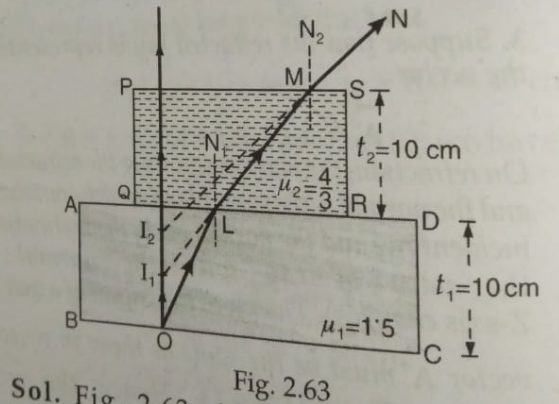 .View Solution
.View SolutionQuestion 66
A rectangular glass block of thickness 10 cm and refractive index 1.5 is placed over a small coin.A beaker is filled with water of refractive index 4/3 to a height of 10 cm and is placed over a small block.
If the eye is slowly moved away from the normal at a certain position,the coin is found to diappear due to total internal reflection.At what surface does it happen and why? .View Solution
.View SolutionQuestion 67
Fig.2.64 shown an irregular block of material of refractive index sqr2.A ray of light strikes the face AB.After refraction,it is incident on a spherical surface CD of radius of curvature 0.4 m and neters a medium of refractive index 1.514 to meet PQ at E.Find the distnce OE up to two decimal.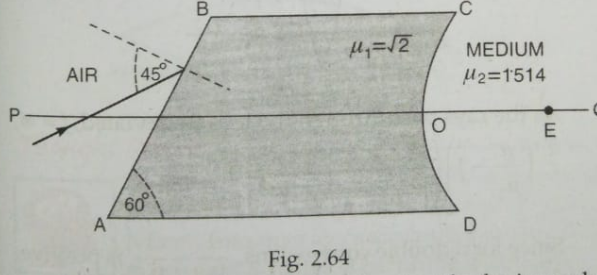 .View Solution
.View SolutionQuestion 69
A point object is placed at a distance of 0.3 m from a convex lens(focal length 0.2 m) cut into two halves,each of which is displaced by 0.5 mm as shown in Fig.2.67 .Find the positio of the image.If more than one image is formed,find their number nd the distance between them. .View Solution
.View SolutionQuestion 72
A plano - convex lens has thickness 4 cm.When placed on a horizontal table with the curved surface in contact with it,the apparent depth of the bottom-most point of the lens is found to be 3 cm.If the lens is inverted ,such that the plane face is in contact with the table,the apparent depth of the centre of plane face of the lens is found to be 25/8 cm.Find the focal length of the lens.View SolutionQuestion 75
A pin is placed 10 cm in front of convex lens of focal lenth 20 cm made of material of refractive index 1.5 .the surface of the lens farther away from the pin is silvered and has a radius curvature 22 cm.Detrermine the position of the final image.Is the image real or virtual? .View Solution
.View SolutionQuestion 167
Two monochromatic rays of light are incident normally on the face AB of an isosceles right-angled prism ABC.The refractive indices of the glass prism for the two rays 1 and 2 are respectively 1.35 and 1.45[Fig.2.76]Trace the path of these rays after entering through the prism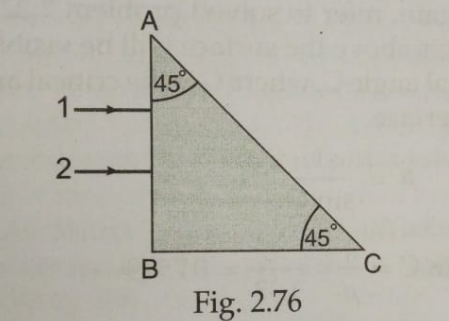 .View Solution
.View SolutionQuestion 189
A luminous object is paced just below a glass slab of thickness t. A circular opaque disc is placed vertically above on the surface of the glass-slab. If C is critical angle for glass-air interface, then predict the minimum radius of the opaque disc so that the object cannot be seen from any uncovered portion of the glass-slab.View SolutionQuestion 193
For a spherical surface,when refraction takes place from a rarer medium (μ1) to a denser medium (μ2), we write
−μ1u + μ2v = μ2−μ1R
where the symbols have their usual meanings. Now suppose that the object is placed in the denser to the rarer medium . Then, rewrite the above equation.View SolutionQuestion 217
The image of a candle is formed by a convex lens on a screen. The lower half of the lens is painted black to make it completely opaque. Draw the ray diargram to show the image formation. How will this image be different from the one obtained when the lens is not painted black?View SolutionQuestion 223
The following data was recorded for values of object distance and the corresponding values of image distance in the experiment on study of real image formation by a convex lens of power +5 D.One of these observations is incorrect.Identify this observation and give reason for your choice: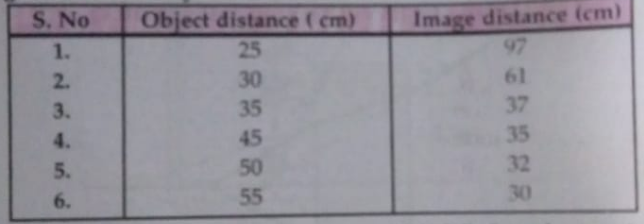 .View Solution
.View Solution
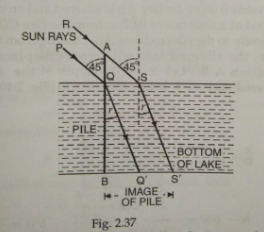 .
.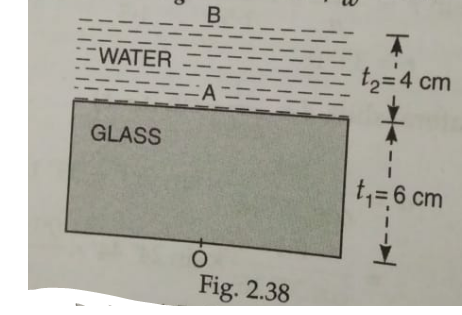 .
.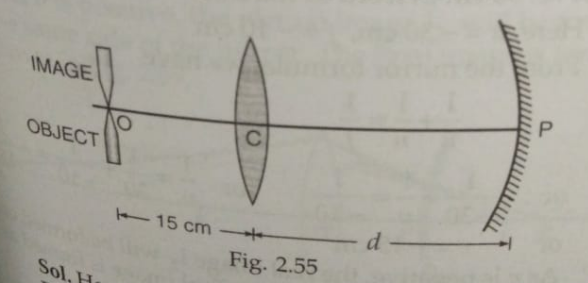 .
.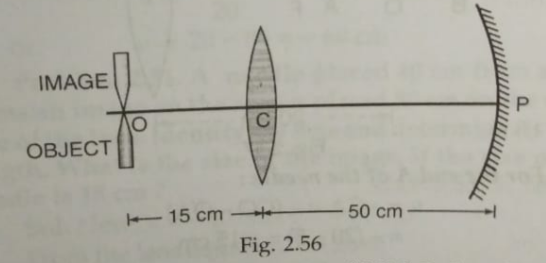 .
.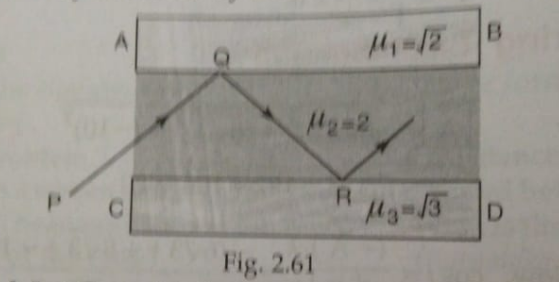 .
. .
.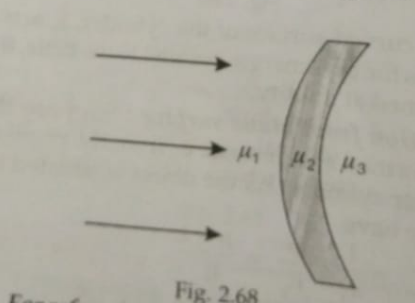 .
.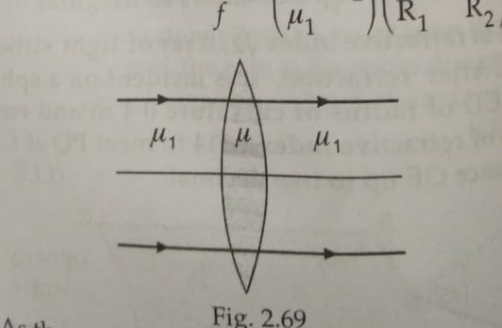 .
.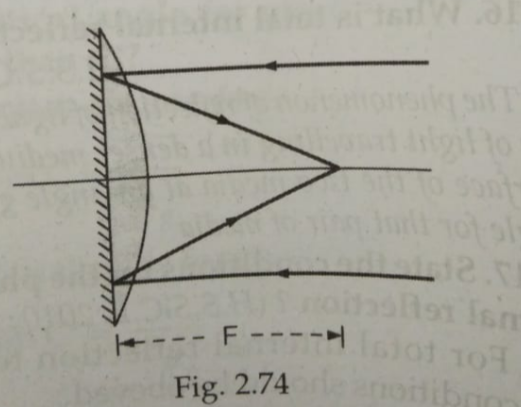 .
.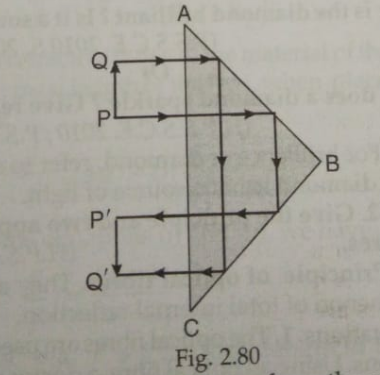 .
.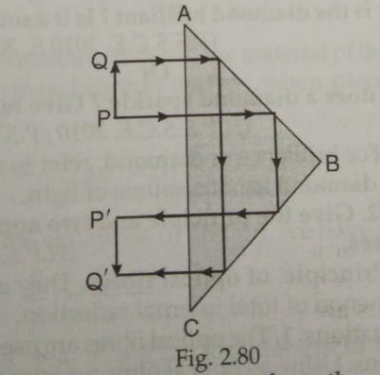 .
. .
.